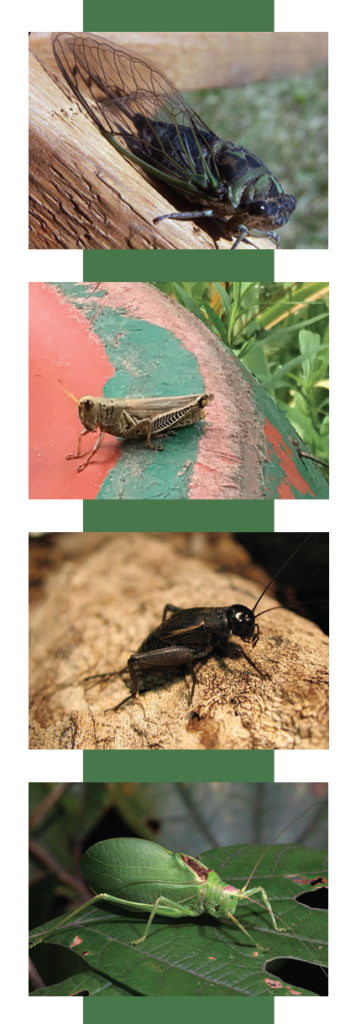After passage of the sultry Dog Days (called so because they occur when Sirius, the Dog Star, aligns with the sun), the end of summer is most notable for its sounds. This is the time of year when four insects known more for their musical serenades than their appearances show up in full force.
Cicadas
Cicadas emerge in late May or early June and start their serenades in late July or early August and play on into September. This year, they were rather silent throughout most of summer which may have had something to do with the late spring we experienced. But when they do “sing,” they really belt it out. The sound of one single male cicada seeking a mate is quite loud. They vibrate their tymbals, a membranous organ on their abdomens, to produce that rattling sound. The noise of the cicada, like the jingle of an ice cream truck, is one of the sounds most closely associated with summer.
Grasshoppers
A buzzy trill heard in late summer is usually emanating from male grasshoppers, also known as locusts, as they rub pegs on the inner surface of their hind femurs against the edges of their forewings. Like the cicadas, they do this to attract females. There are over 650 species of grasshoppers in North America. We’ve printed several stories in the Juniper Berry which mentioned that a pastime of local boys during the last century was catching grasshoppers. They were once ubiquitous, but their populations are now challenged by development encroaching on their habitats. They can still be found in our parks and cemeteries and in those yards that haven’t been paved over.
Crickets
If you’ve ever hosted a cricket in your home, you know how creepy it sounds. Yes, the sound has to do with mating. The base of each cricket wing has a file and a vibrating membrane, the tympanum. The cricket rubs his wing files together, activating the tympana which emits a high-pitched noise. They tend to be dark brown or black in color. Unlike the previously mentioned insects, crickets are unique in that they are nocturnal. Sit outside on a warm September night and you’ll likely hear them calling.
Katydids
Body-wise, the species known as the Common True Katydid doesn’t look like a cricket or a grasshopper, despite being related to both. It resembles a leaf and is incapable of flight. It’s very rare to see one as they spend most of their lives in treetops. But they do venture down to the ground at times during mating season, which lasts from midsummer until the first frost. I remember as a young child happening upon one in my yard. My great-grandfather gingerly picked it up between his fingers so my brother and I could get a closer look. He told us to listen for “Kate-y Did! Kate-y Did!” and we were excited when we finally heard it. If you use your imagination, it does sound almost like an accusation.
Soon the sounds of September will fall silent, giving way to the rustling of leaves. Enjoy them while you can.




